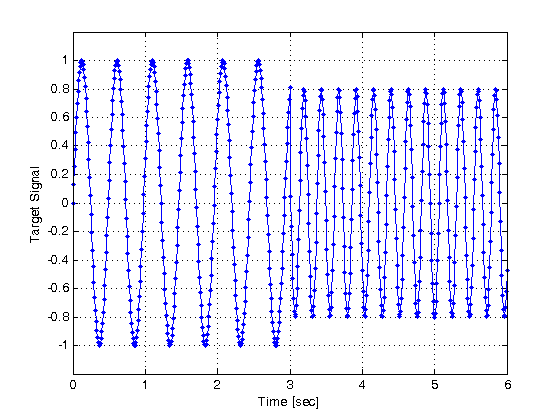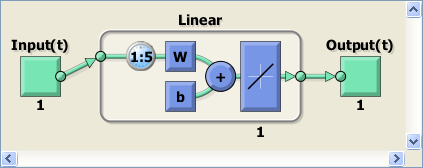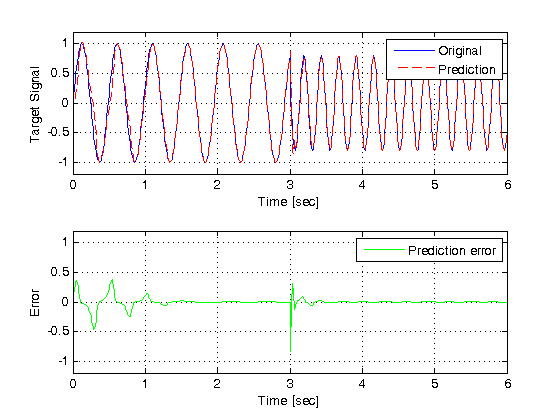ADALINE time series prediction
Neural Networks course (practical examples) © 2012 Primoz Potocnik
PROBLEM DESCRIPTION: Construct an ADALINE for adaptive prediction of time series based on past time series data
Contents
Define input and output data
close all, clear all, clc, format compact % define segments of time vector dt = 0.01; % time step [seconds] t1 = 0 : dt : 3; % first time vector [seconds] t2 = 3+dt : dt : 6; % second time vector [seconds] t = [t1 t2]; % complete time vector [seconds] % define signal y = [sin(4.1*pi*t1) .8*sin(8.3*pi*t2)]; % plot signal plot(t,y,'.-') xlabel('Time [sec]'); ylabel('Target Signal'); grid on ylim([-1.2 1.2])

Prepare data for neural network toolbox
% There are two basic types of input vectors: those that occur concurrently % (at the same time, or in no particular time sequence), and those that % occur sequentially in time. For concurrent vectors, the order is not % important, and if there were a number of networks running in parallel, % you could present one input vector to each of the networks. For % sequential vectors, the order in which the vectors appear is important. p = con2seq(y);
Define ADALINE neural network
% The resulting network will predict the next value of the target signal % using delayed values of the target. inputDelays = 1:5; % delayed inputs to be used learning_rate = 0.2; % learning rate % define ADALINE net = linearlayer(inputDelays,learning_rate);
Adaptive learning of the ADALINE
% Given an input sequence with N steps the network is updated as follows. % Each step in the sequence of inputs is presented to the network one at % a time. The network's weight and bias values are updated after each step, % before the next step in the sequence is presented. Thus the network is % updated N times. The output signal and the error signal are returned, % along with new network. [net,Y,E] = adapt(net,p,p); % view network structure view(net) % check final network parameters disp('Weights and bias of the ADALINE after adaptation') net.IW{1} net.b{1}
Weights and bias of the ADALINE after adaptation
ans =
0.7179 0.4229 0.1552 -0.1203 -0.4159
ans =
-1.2520e-08

Plot results
% transform result vectors Y = seq2con(Y); Y = Y{1}; E = seq2con(E); E = E{1}; % start a new figure figure; % first graph subplot(211) plot(t,y,'b', t,Y,'r--'); legend('Original','Prediction') grid on xlabel('Time [sec]'); ylabel('Target Signal'); ylim([-1.2 1.2]) % second graph subplot(212) plot(t,E,'g'); grid on legend('Prediction error') xlabel('Time [sec]'); ylabel('Error'); ylim([-1.2 1.2])
